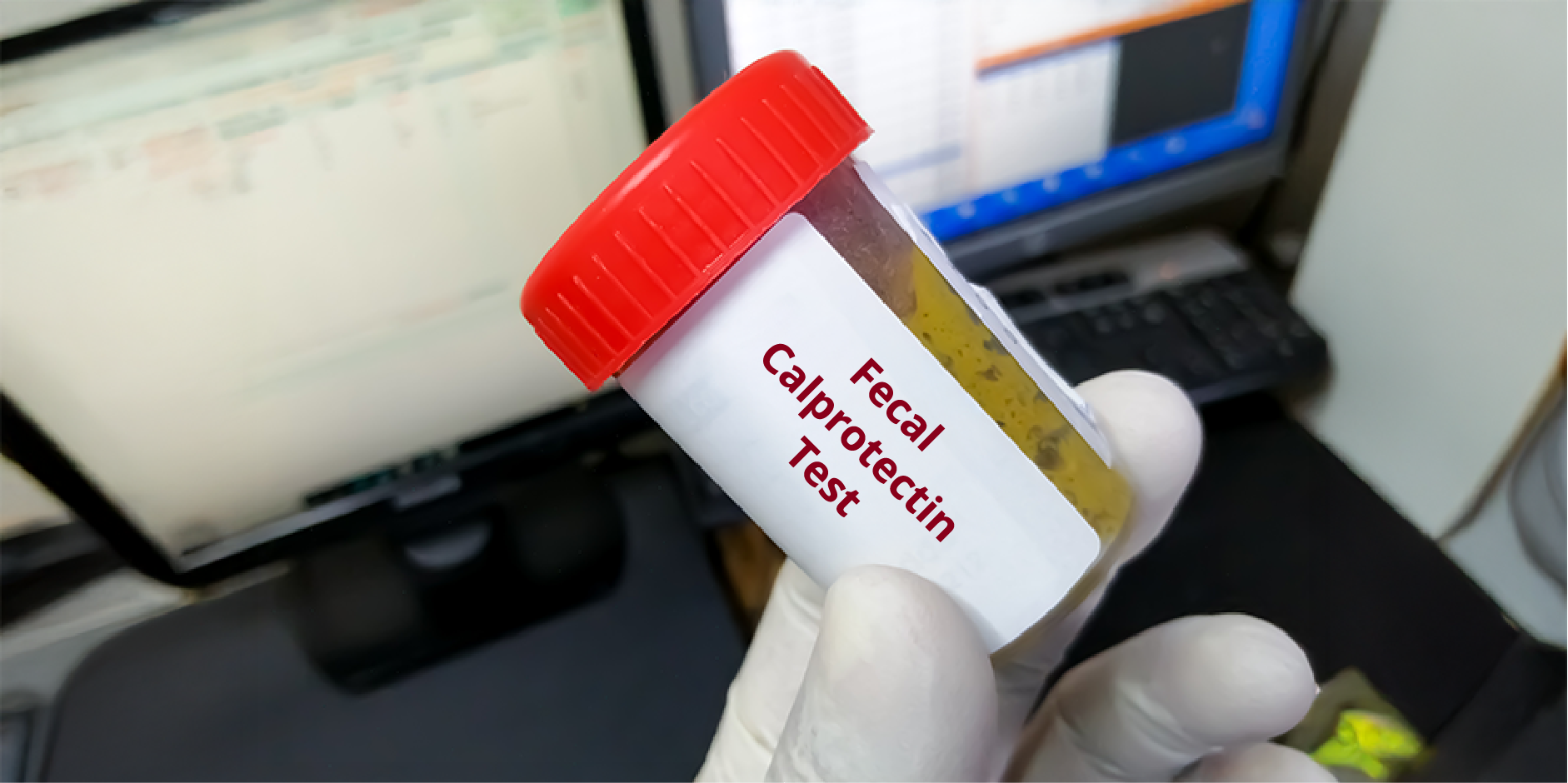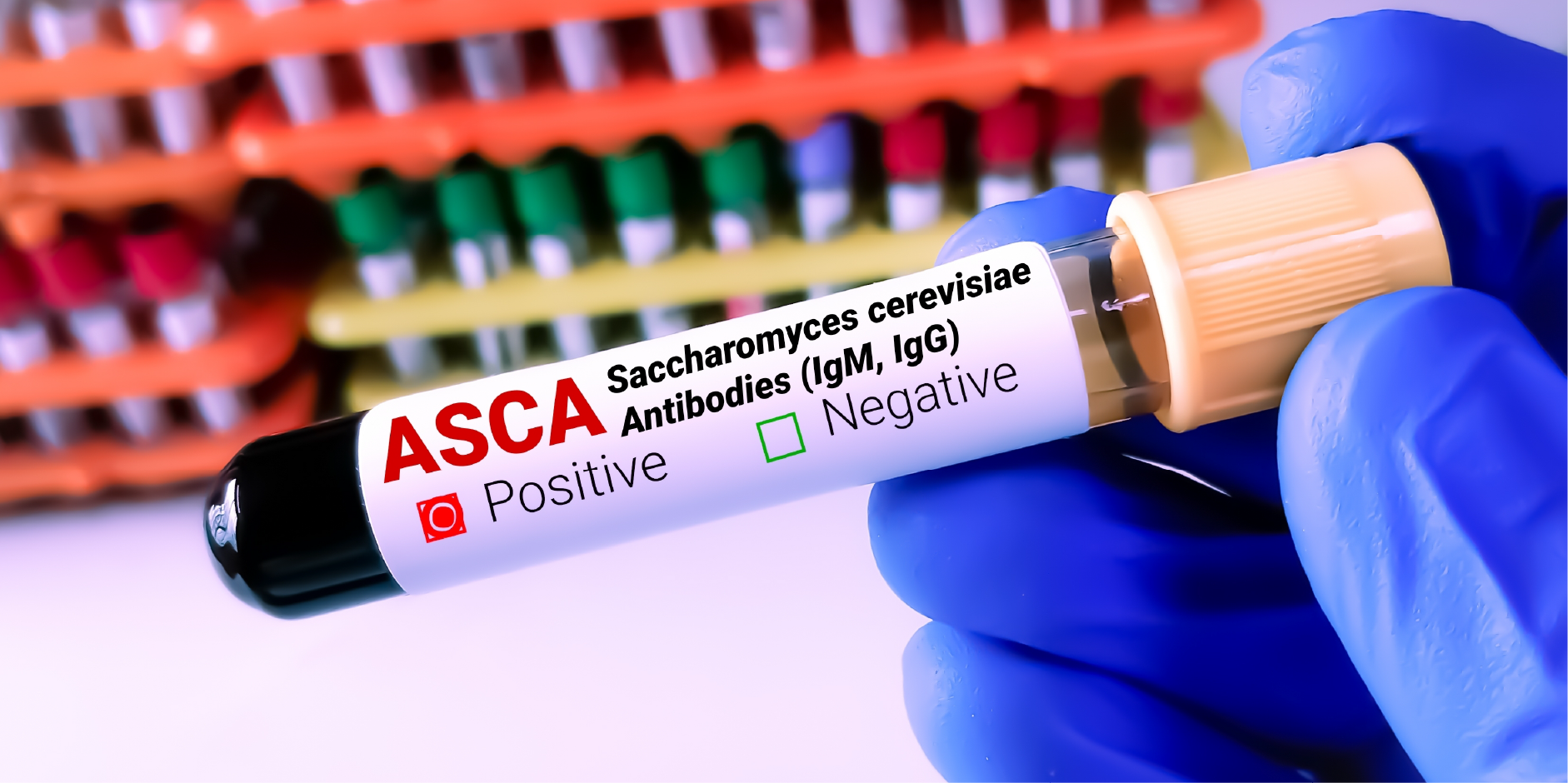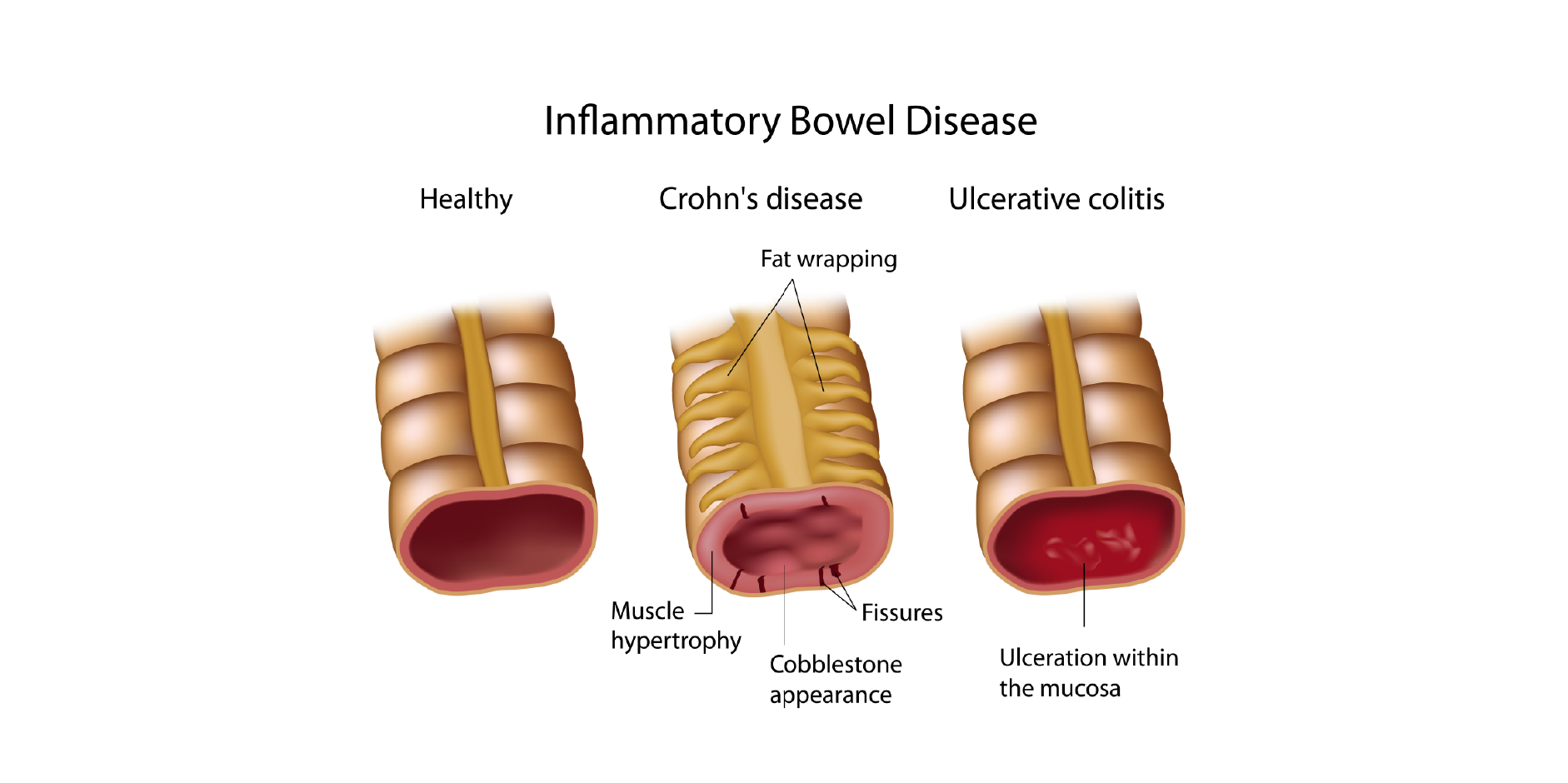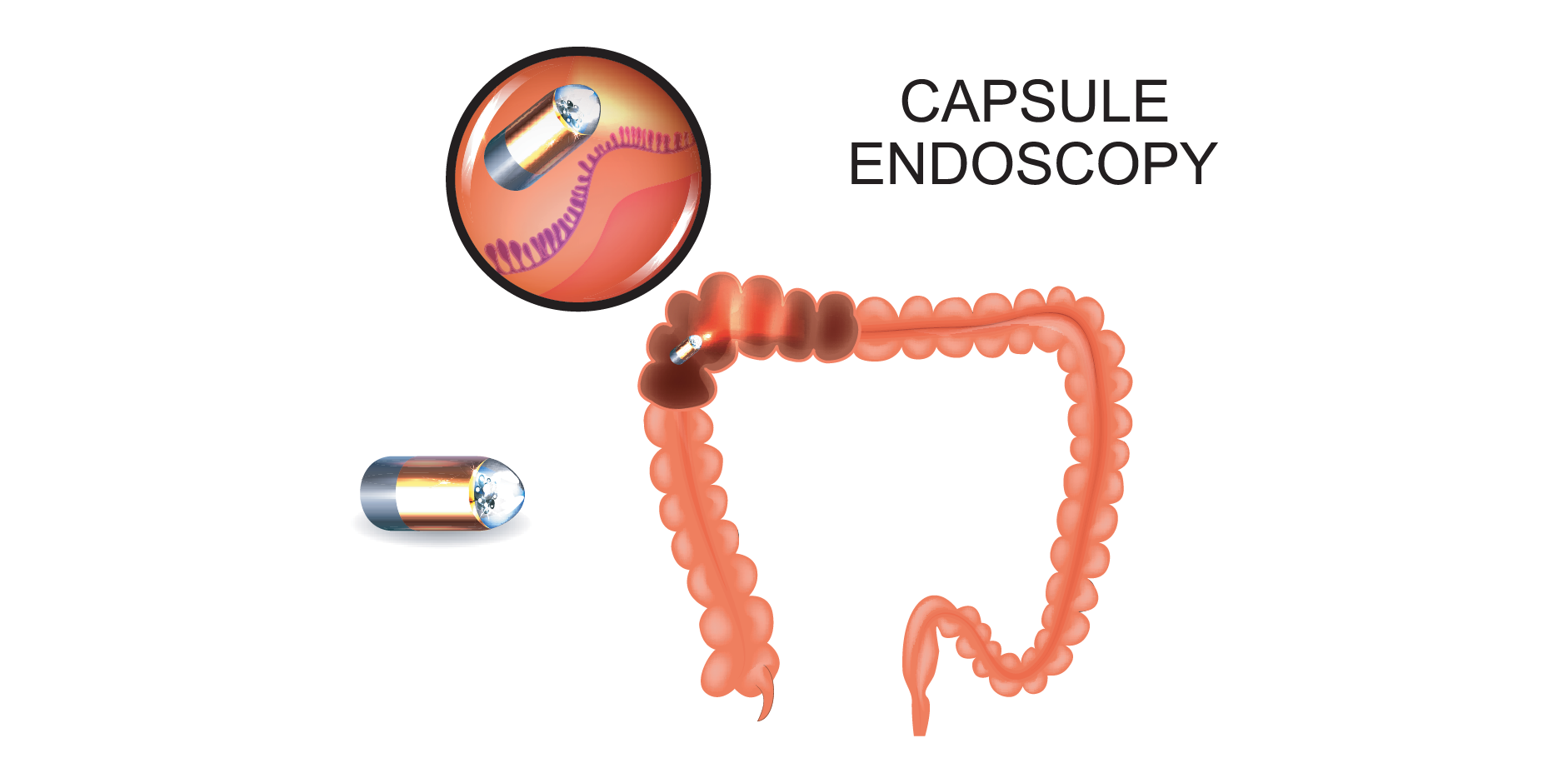Nội dung của trang này:
Nội dung của trang này:
Laboratory Tests and Ancillaries
Laboratory Tests
Laboratory tests
include complete blood count (CBC), liver function test (LFT), serum albumin,
ferritin, calcium, magnesium, and vitamin B12 level. Tests for electrolytes may
be indicators of decreased absorption. A routine stool exam including checking
for occult blood or fecal leukocyte and stool culture should be done. A stool
microbiologic testing for infectious diarrhea including Clostridioides
difficile toxin, cytomegalovirus (CMV) should be considered in severe or
refractory colitis. This should be performed in patients with elevated markers
of inflammation and disease-related symptoms to rule out other sources of GI
infections. Perform HIV and TB testing for high-risk populations.
Serum and Fecal
Inflammatory Biomarkers
Biomarkers (eg serum
C-reactive protein [CRP], fetal calprotectin, fecal lactoferrin) are often used
for non-invasive monitoring and making treatment decisions in patients with ulcerative
colitis. This will be able to predict endoscopic activity of disease.
Erythrocyte sedimentation rate (ESR) and C-reactive protein (CRP) should be
done. An elevated CRP with increased ESR, anemia and hypoalbuminemia are used
as predictive biomarkers to assess the need for colectomy in patients with
acute severe colitis.
 Inflammatory Bowel Disease_Diagnotics 1
Inflammatory Bowel Disease_Diagnotics 1Fecal calprotectin should be done to detect intestinal inflammation. This is a neutrophil-derived protein and is the most sensitive marker of intestinal inflammation in inflammatory bowel disease. This aids in differentiating inflammatory bowel disease from irritable bowel syndrome. This can be used for diagnosis and assessment of disease severity in ulcerative colitis and has good correlation with endoscopic indices, relapse and response to treatment. Fecal calprotectin may be used for monitoring disease activity of inflammatory bowel disease patients on therapy. This may be used as a marker for relapse in patients with inactive inflammatory bowel disease. However, this is less accurate in determining endoscopic inflammation in patients with ulcerative proctitis or limited segmental disease.
Serologic Markers
 Inflammatory Bowel Disease_Diagnotics 2
Inflammatory Bowel Disease_Diagnotics 2Serologic markers are occasionally helpful in identifying patients who are at higher risk for complications and in selected patients in whom no other pathologic or clinical feature differentiates between Crohn’s disease from ulcerative colitis. A serologic marker for ulcerative colitis is perinuclear antineutrophil cytoplasmic antibodies (pANCAs). Serologic markers for Crohn’s disease include Anti-Saccharomyces cerevisiae antibodies (ASCA), and CBir 1 (an anti-flagellin antibody). These are not sufficiently sensitive nor specific to be used as a screening or diagnostic tool.
Histopathology
Histopathology should attempt to define the type of inflammatory bowel disease, mention coexistent diagnosis or complications, and determine presence of dysplasia and its grade. The histopathology of ulcerative colitis includes mucosal separation, distortion and atrophy of crypts; acute and chronic inflammatory cells in the lamina propria, preferential homing of neutrophils to the crypt epithelium, and an increased number of plasma cells near the crypt base. Focal or diffuse basal plasmacytosis is the earliest feature with the highest predictive value for diagnosis. Widespread mucosal or crypt architectural distortion, mucosal atrophy, and an irregular or villous mucosal surface are features that appear 4 weeks after presentation. The histopathology of Crohn’s disease includes granulomas and focal crypt architectural abnormalities with focal or patchy chronic inflammation (defined as the presence of lymphocytes and plasma) or mucin preservation at active sites. The diagnosis is made when at least three histological features of Crohn’s disease are present on surgical samples in the absence of granulomas, or when an epithelioid granuloma is present with one other feature such as segmental crypt architectural abnormalities and mucin depletion, mucin preservation at the active sites, and focal chronic inflammation without crypt atrophy.
Imaging
Endoscopy
Endoscopy may differentiate Crohn’s
disease from ulcerative colitis in >85% of patients if used in conjunction with
other diagnostic modalities. This is used to assess disease extent and
activity, to monitor response to therapy, and for surveillance of dysplasia or neoplasia.
This may be used to prognosticate patients hospitalized with acute severe ulcerative
colitis. An upper GI endoscopy is recommended for patients with Crohn’s disease
and with upper GI symptoms (nausea and vomiting [N/V], dyspepsia), but not for
asymptomatic, newly diagnosed, adult inflammatory bowel disease patients. The findings
include aphthous ulcers, superficial erosions, late-stage stricture
development, and cobblestoning of the mucosa. A biopsy is an important part of an
endoscopic exam and differentiates Crohn’s disease from ulcerative colitis and
excludes the presence of other causes of colitis. Endoscopy may help in
establishing the extent of inflammation which aids in determining the
appropriate therapy and disease prognosis. This is recommended even in the
absence of macroscopic change (normal-looking mucosa).
 Inflammatory Bowel Disease_Diagnotics 3
Inflammatory Bowel Disease_Diagnotics 3Colonoscopy
Ileocolonoscopy with biopsies from inflamed and uninflamed segments is recommended for suspected inflammatory bowel disease to establish diagnosis. This is recommended to confirm the diagnosis of ulcerative colitis, and to determine the extent and severity of inflammation. This is also recommended for patients with unexplained perianal fistula and suspicion of Crohn’s disease to assess mucosal inflammation in the ileum or colon. This should not be done in patients with acute severe colitis or suspected of toxic megacolon due to increased risk of perforation. Crohn’s disease shows findings of segmental or discontinuous colitis or patchiness, presence of strictures and fistulae, rectal sparing, involvement of the terminal ileum and right-sided colon, and anal or perianal disease. There is also the presence of ulcers (discrete, aphthous or serpiginous), cobblestoning of mucosa, and granulomata. Ulcerative colitis shows findings of granularity, friability, ulceration of the rectal mucosa and the vascular pattern is lost, diffuse superficial inflammation, erosions, and ulcers. These changes, seen endoscopically and histologically, usually involve the distal rectum. This is characterized by continuous and confluent colonic involvement with clear demarcation of inflammation and rectal involvement. Colonoscopy with ileoscopy may help distinguish true Crohn’s disease ileitis from backwash ileitis. At least two biopsies from five sites, including distal ileum and rectum, are recommended. The use of chromoendoscopy during colonoscopy is recommended in patients with high risk for colorectal cancer (CRC) (eg patients with a history of dysplasia or with primary sclerosing cholangitis).
Flexible Sigmoidoscopy
Flexible sigmoidoscopy is performed when colonoscopy is considered high risk (eg fulminant colitis) or where there is a higher risk of bowel perforation. In patients diagnosed with ulcerative colitis, it helps in assessing disease activity and in evaluating other causes of colitis during disease exacerbations. Proctosigmoidoscopy or ileocolonoscopy is recommended in all patients with perianal Crohn’s disease to assess the extent of disease, severity of luminal inflammation, presence of internal openings, and to exclude complications eg stricture and cancer. This is recommended to confirm the diagnosis of severe colitis and exclude infection. Severe colitis is demonstrated as hemorrhagic mucosa with deep ulceration, mucosal detachment on the edge of the ulcerations, and well-like ulceration.
Capsule Endoscopy
 Inflammatory Bowel Disease_Diagnotics 4
Inflammatory Bowel Disease_Diagnotics 4Small bowel capsule endoscopy (SBCE) allows for direct visualization of the small intestinal mucosa. This is a less invasive technique in diagnosing Crohn’s disease when ileoscopy and small bowel follow-through (SBFT) are negative or unsuccessful. The presence of ≥3 small intestine ulcers is highly suggestive of Crohn’s disease, provided the patient has not been taking NSAIDs for at least 1 month. This may also be considered in patients with unclassified inflammatory bowel disease at diagnosis. This is contraindicated in Crohn’s disease patients with known or suspected high-grade strictures, swallowing disorders and GI obstruction. Capsule endoscopy does not allow tissue sampling but may identify a site for directed biopsy to obtain tissue samples for diagnosis. This major concern on capsule retention limits its use.
Balloon-assisted Enteroscopy
Balloon-assisted enteroscopy allows direct mucosal visualization of the entire small bowel, which may be used for diagnostic evaluation and endoscopic intervention throughout the small bowel. The advantages include the possibility of taking biopsies, conducting therapeutic intervention throughout the small bowel and interventions to manage bleeding. The disadvantages include the need for patient sedation and that the examination is time-consuming. Endoscopic balloon dilatation is an option for Crohn’s disease patients with primary intestinal strictures or anastomotic strictures.
Endoscopic Ultrasonography (Rigid Scope or with Flexible Endoscopes)
Endoscopic ultrasonography can accurately assess and characterize Crohn’s perianal fistula. This is used in assessing disease activity of colitis and transmural disease.
Radiologic Studies
Radiologic studies complement endoscopic techniques in the diagnosis of inflammatory bowel disease.
Abdominal Radiography
Abdominal radiography excludes colonic dilatation and helps assess disease extent in ulcerative colitis or identify proximal constipation. In Crohn’s disease, it shows mass in the right iliac fossa or small bowel dilatation, obstruction or perforation.
Barium Contrast Examinations
Barium contrast examinations are typically inferior to colonoscopy. These show luminal narrowing with ulcerations, loop adhesions/separations, and circular fold thickening and alterations. Examples of barium contrast examinations are small bowel follow-through (SBFT) and small bowel enteroclysis (SBE). SBE is 95% sensitive and 96.5% specific for small bowel diseases, especially for early mucosal lesions. SBFT is safer and better in detecting gastroduodenal abnormalities as compared to SBE (67-72% accuracy in detecting inflammation). The limitations include extraluminal extensions, bowel wall complications of Crohn’s disease and radiation exposure.
Ultrasound
Ultrasound excludes colonic dilatation, helps assess disease extent in ulcerative colitis and identifies proximal constipation. This is a non-invasive, sensitive way of identifying thickened small bowel loops in Crohn’s disease. Intestinal ultrasound (IUS) is recommended for newly diagnosed Crohn’s disease patients to assess the small bowel. This is used as an adjunct in the diagnosis of Crohn’s disease and monitoring of treatment response. This is 79% sensitive and 93% specific for stenosis; 71-74% sensitive and 95-96% specific for fistula; and 84% sensitive and 93% specific for abscess. This may also identify abscesses and free fluid in the peritoneum. This is also used as an imaging guide during procedures. The advantages of IUS are non-invasive, provides rapid evaluation of bowel wall thickness, allows direct visualization of bowel vascularization and motility, and does not use ionizing radiation. A prospective trial has shown good concordance between US and magnetic resonance (MR) enterography for disease location and activity, and fewer technical difficulties with IUS. Endorectal ultrasound may be used to further characterize perianal Crohn’s disease and perianal abscesses. A serial endorectal ultrasound may be used to help guide treatment interventions in patients with fistulizing Crohn’s disease including seton removal and discontinuation of medical treatment. The limitations include limited access to the proximal ileum and jejunum, transverse colon and rectum.
Computed Tomography (CT) Scan
Computed tomography (CT) scan is the gold standard for the detection of extraluminal complications, particularly abscess formation. In ulcerative colitis, this may show marked bowel wall thickening, although this finding is non-specific. This can be used for newly diagnosed Crohn’s disease patients to assess the small bowel. This can establish disease extent and activity based on wall thickness and increased intravenous (IV) contrast enhancement. CT is a better imaging tool against peristalsis and motion because of its rapid pacing. This is 92% sensitive and 100% specific for stenosis; 89% sensitive for inflammation; 70% sensitive and 97% specific for fistula; and 85% sensitive and 95% specific for abscess. CT scan may be used to help direct abscess drainage preoperatively resulting to lower rates of post drainage complications. This produces results faster and is readily available as compared to MRI. The limitations are that CT may require luminal distention and application of contrast media and carries a potential risk for radiation-induced malignancy.
Magnetic Resonance Imaging (MRI)
Magnetic resonance imaging is a good imaging tool that limits motion and peristalsis due to its fast sequences. This is 89% sensitive and 94% specific for stenosis; 83% sensitive for inflammation; 76% sensitive and 96% specific for fistula; 86-100% sensitive and 93-100% specific for abscess; and 76% sensitive and 96% specific for abscess/fistula/inflammation infiltrates in Crohn’s disease. This can be used for newly diagnosed Crohn’s disease patients to assess the small bowel. MRI can establish disease extent and activity based on wall thickness and increased IV contrast enhancement. This is the most accurate imaging modality to diagnose and classify perianal Crohn’s disease and is considered the first-line test. This provides information about disease activity, detects extraluminal findings and wall complications, and helps distinguish between inflammatory and fibrotic structuring. MRI is preferred over CT to minimize cumulative risks of radiation. The limitation is that this requires administration of contrast media.
Nuclear Medicine/Scintigraphy
Nuclear medicine/scintigraphy is a technique that can identify disease extension and activity. This has lower radiation exposure and is recommended for children. A WBC scintigraphy is more sensitive for screening of inflammatory bowel disease because of the application of radiolabeled leukocytes. There is not enough evidence to support the use of FDG-PET in post-treatment inflammatory bowel disease patients.
